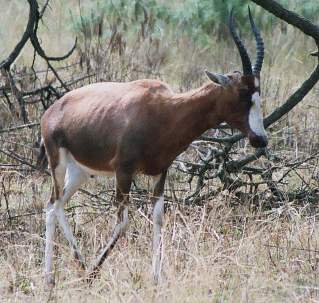Facts About Blesbok
The blesbok, or blesbuck, is a distinctive antelope native to South Africa and Eswatini. Its striking white face and forehead make it easily recognizable. Interestingly, the blesbok and bontebok are subspecies of the same species and are capable of interbreeding.
These antelopes thrive in the open grasslands of southern Africa, especially within national parks. Both male and female blesboks exhibit similar physical characteristics and can weigh up to 85 kilograms. They possess a distinctive brown coat with a white blaze on their face and a lighter patch on their back.
Blesboks prefer open grasslands with access to water and usually maintain small territories. Although they were once abundant, their numbers significantly decreased due to hunting for their skins and meat. Fortunately, after being granted protection in the late 19th century, their population has rebounded to approximately 54,000. They breed seasonally, with most births occurring between November and December.
Predators of the blesbok include humans, big cats, wild dogs, and hyenas. Today, they are also farmed and hunted for various purposes.
Fossil remains of a prehistoric relative, Damaliscus niro, have been discovered in South Africa. This ancient species, which was larger than the modern blesbok, went extinct at the end of the Pleistocene around 12,000 years ago.

 Botswana
Botswana